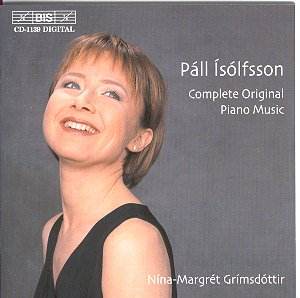 |
Páll ÍSÓLFSSON
(1893-1974) Crotchet
AmazonUK
AmazonUS |
If you know Moeran's The White Mountain, Peter Maxwell Davies' Farewell to Stromness, the Grieg Lyric Pieces or the Frösöblömster of Peterson-Berger you will have some idea of what to expect of the Humoresques and the Three Pieces. Ísólfsson worked, in this case, at the margins of the tonal tradition not violating it but subtly exploring its hinterland; probing at the boundaries. The Three Pieces and the Humoresques jar the folk song and folk dance argot with spiced Brahmsian drama.
This accounts for the first five tracks. Then come the fourteen Album Leaves where the 'ernste' Brahms goads, struts, flickers, muses and smiles. There is little experimentation. The beaming smile peeps out from many corners and I recommend that you spend five minutes in the company of the Impromptu (track 9). The folk voice has now largely been subsumed and is glimpsed, if at all, in shadows and suggestions. The music has a sanguine power that places it apart from Macdowell's profusion of piano miniatures - superficial soul-mates.
The pianist's notes, which benefit us from knowledge of the music 'from the inside', refer to the importance of these pieces in Iceland's national cultural legacy. This is, I am sure, quite true. She also acknowledges that the music belongs in the tradition of German romanticism. It intrigues me that the composer is so clearly in thrall to the Brahmsian stream in the two major works on this disc but in the first two works is in free-wheeling sympathy with Grieg.
A truly idiomatic and disturbing Icelandic voice is to be heard in the music of Jón Leifs whose oeuvre is being done proud by BIS. Ísólfsson was no revolutionary. He worked with craftsmanship and some inspiration within the traditions he had learnt in Leipzig with Reger and Teichmüller. The stones and ice of Iceland might be glimpsed instantly in variation 6 and variation 7 (the latter an Eroica-like processional). They can also be sensed in the Pálsson variations but the idiom is unmistakably adopted and fits the composer like a glove.
Rob Barnett